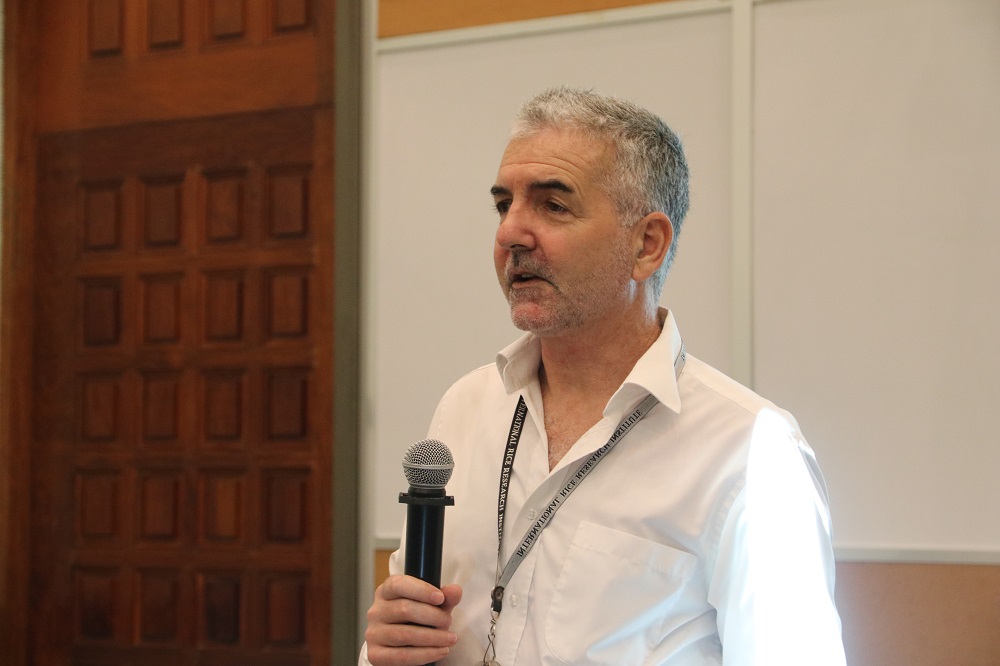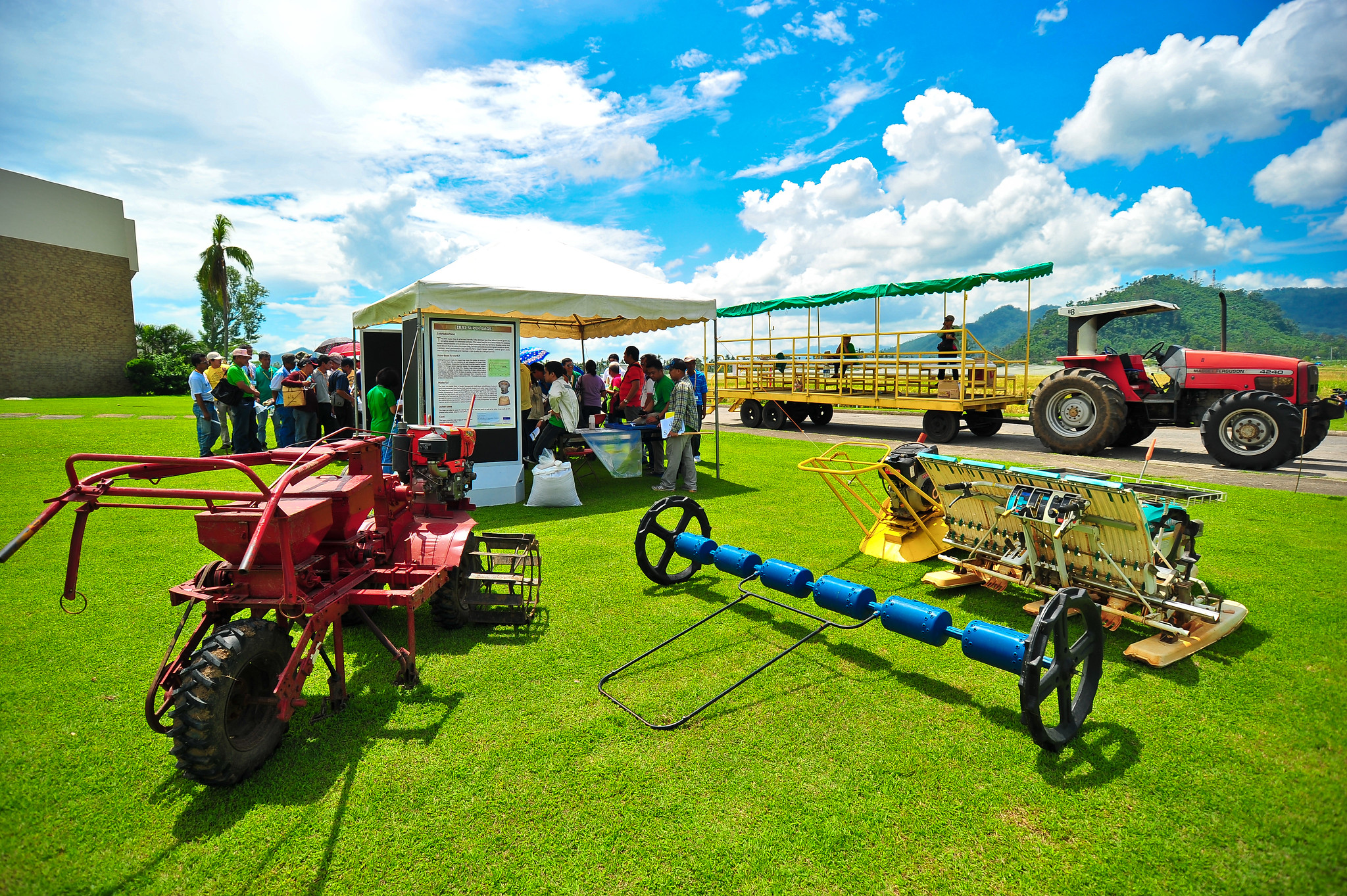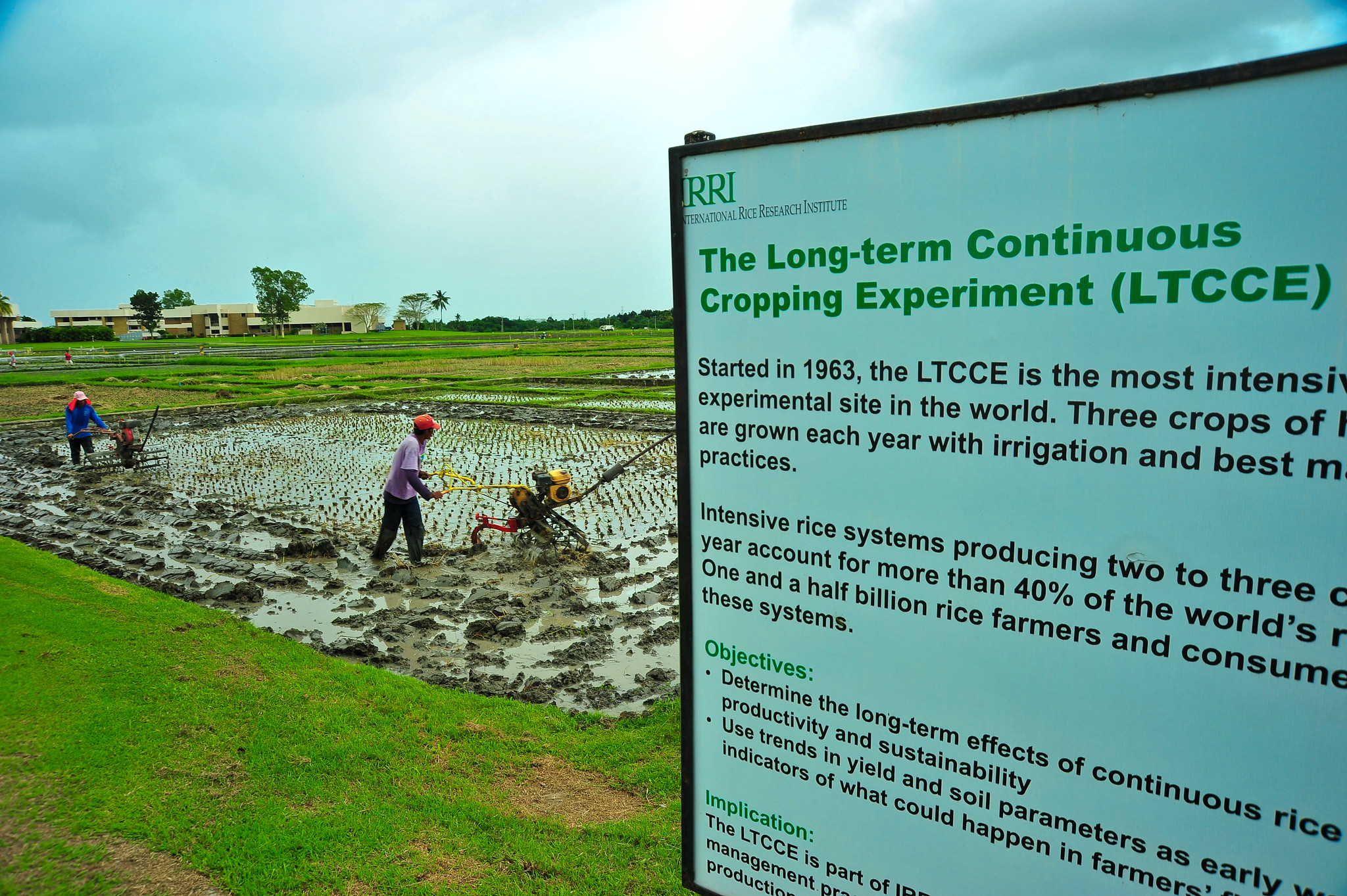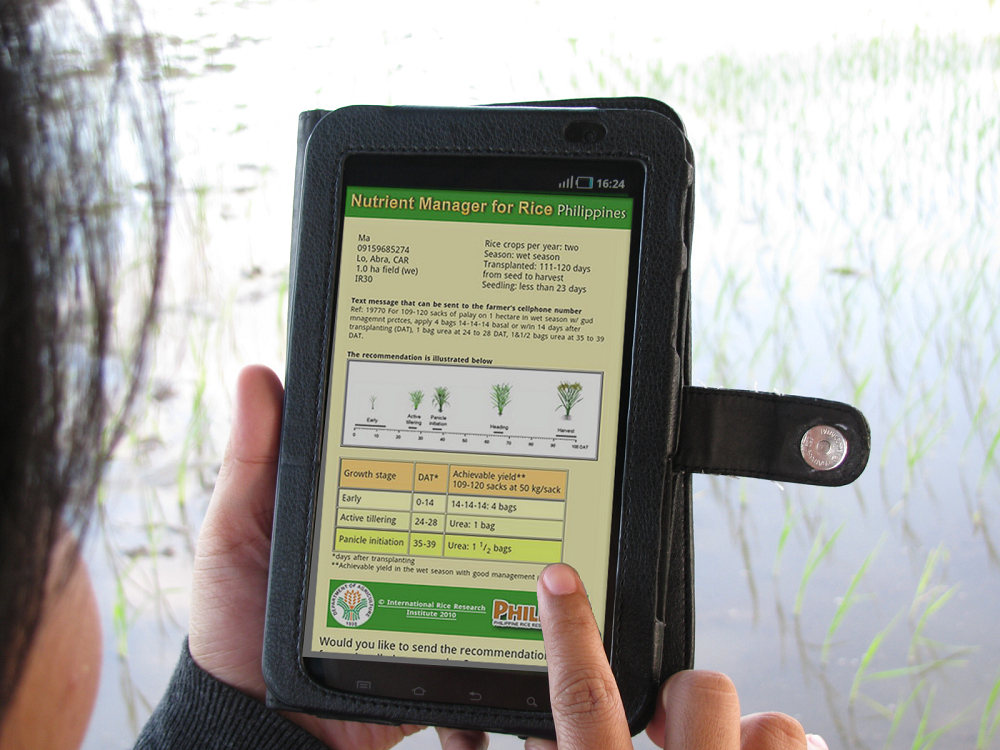Often we see research as being “research” and scaling technology as work that development organizations do. What we often fail to see is that scaling is a researchable issue and one that IRRI is very well placed to do. With the increased pressure to demonstrate impact, there’s a danger that we may be tempted to act more and more like a development organization. We’re not a development organization. We’re a research-for-development organization.
Jon Hellin
Lead, Sustainable Impact Platform

.
Agriculture faces many challenges but there are many promising technologies to help overcome these challenges. Jon Hellin (in photo), lead of the Sustainable Impact Platform at the International Rice Research Institute (IRRI), gives his insights into how research and technology can help create a dynamic global rice-based agrifood system.
Prior to joining IRRI, Dr. Hellin had almost 30 years’ real-world understanding and experience in agricultural research-for-development from Asia, sub-Saharan Africa, and Latin America. His expertise includes farmers’ access to markets within globalized food systems, soil and water conservation, agroforestry, climate change adaptation and mitigation, and the fostering of agricultural innovation systems.
We’re not a development organization. We’re a research-for-development organization
There are a lot of research needs and issues arising as the research landscape changes which, with IRRI’s long-standing, trusted reputation as an honest broker, we can engage in and have the respect of others. But I think all CGIAR centers are facing the pressure to demonstrate impact and that’s understandable. One of the dangers of that is that we see research and impact as two separate things.
Often we see research as being ‘research’ and scaling technology as work that development organizations do. What we often fail to see is that scaling is a researchable issue and one that IRRI is very well placed to do. With the increased pressure to demonstrate impact, there’s a danger that we may be tempted to act more and more like a development organization. We’re not a development organization. We’re a research-for-development organization. And I think there’s a fundamental difference.

.
You’re not going to get impact just through technology development
Technology development is critical, but you’re not going to get impact just through technology development. We can have the greatest technologies out there. But if these are not taken up by farmers, they’re going to have very little impact. When we look at the connections between research and impact, in light of the Sustainable Impact Platform, we’ve been pushing this idea that we need to look at impact along three interconnected pathways.
We’ve got to complement technology development with capacity development. I think that is a very important area of work and we do a huge amount. We are working with national research and extension systems and in different parts of the world and we learn from them as well. Then there’s a policy influence. What we can do is not necessarily bring about policy change but do rigorous research on the basis of which we can make informed policy recommendations.
By mapping out those pathways, it also helps define the roles and responsibilities of different actors
One of the key things around the link between research and impact is to map out realistic, plausible impact pathways. One of the dangers with the pressures on us from donors and investors to demonstrate impact is to make promises that we’re not able to fulfill. But if we’re a bit more honest about the key role that we do play in that impact pathway and the key relationships we have with different actors we are in a position to present plausible impact pathways, which I think are beneficial for lots of people.
By mapping out those pathways, it also helps define the roles and responsibilities of different actors, including the same donors and investors who are funding us and the plethora of public and private sector actors with whom we already have and will be continuing to develop new working relationships.
Technologies are not neutral. We are open about the trade-offs in the technologies that we develop.
Trade-offs sometimes exist between Sustainable Development Goals (SDG). We are positioning ourselves for the contributions that our research makes to some of those SDGs, but we also are open about the trade-offs. Look at the technologies that we develop. Technologies are not neutral. Technologies can actually be taken up sometimes more by men than women and can actually exacerbate gender and social inequalities. You could be having technologies contributing to food security which is one of the SDGs but also undermining the SDG on gender equality. So how we move through that minefield is part of the conversation.
What is it that we’re doing and what is it that we need to do?
What is it that we’re doing and what is it that we need to do? How do we position ourselves to ensure that we remain relevant in the context of a very rapidly changing agricultural research-for-development environment? And that’s not to say that we’re looking for ways of just perpetuating our existence for the sake of existing as an organization. It is looking at it saying these are the key needs. These are the key burning issues. What can we do with our partners to ensure that we will continue to contribute in the same way that we have done over the last 59 years?
Climate change adaptation and mitigation are maybe not bold enough. Maybe we need to be a bit more radical.
Climate change is one of the burning issues for the CGIAR. We are very much engaged with it. We work closely with the Climate Change Agriculture and Food Security CRP. And increasingly we are looking at our work in climate change, not just in terms of the more conventional adaptation and mitigation but recognizing that things are moving on. There’s a very strong argument that adaptation and mitigation are maybe not bold enough. We might just be sort of tinkering with the causes of climate change, not so much the consequences. Maybe we need to be a bit more radical. So now people are increasingly talking about transformation.
The research will move from adaptation and mitigation to bring about more fundamental transformation, recognizing stakeholder heterogeneity, building partnerships, and highlighting trade-offs to produce a mosaic of agricultural and nonagricultural climate-smart transformations at the plot, farm, and landscape levels.

The way forward is to work coherently.
The Sustainable Impact Platform uses interdisciplinary approaches and makes accessible solutions to improve governance and efficient use of shared resources (water, air, land, habitat, soil, energy, and nutrients). We don’t want to go back to the disciplinary silos. We have a strategy in place which broke down those disciplinary silos. The way forward is to work coherently together.
The platform benefits from experiments on the IRRI Farm, especially the Long-Term Continuous Cropping Experiment (LTCCE) and research on direct-seeded rice. The work draws on expertise from the six clusters, spanning areas of climate change mitigation, soil, and water management, water and land policy, the issue of straw burning, and energy-efficient mechanization. And, of course, the platform works very closely with the other four platforms at IRRI.
Rigorous research to show how poor targeting undermines farmers’ differential capacity for livelihood transformation
The platform engages in rigorous research to show how poor targeting undermines farmers’ differential capacity for livelihood transformation. We use a farmer-typology approach to focus on farmers who are more likely to be able to improve the resilience of their agricultural-based systems to manage shocks in ways that prevent them from falling below the poverty line.
The platform tests and scales-out context-relevant combinations of technical and institutional innovations. This results in the enhanced adaptive/innovation capacity of vulnerable farming populations. The research draws on geospatial, environmental, modeling, socioeconomic, and policy tools and data to generate credible information and analysis to inform better targeting and system-level solution designs.
The platform also explores how farm diversification can contribute to improved health and nutrition and food security
The challenge for IRRI is to demonstrate the nutritional benefits of rice breeding, e.g. through golden rice and bio-fortification, in light of increasing calls that nutritional benefits are more likely to be forthcoming by directing agricultural research away from a handful of cereal crops and towards crops with inherently higher nutritional value such as fruits, vegetables, and pulses. The platform also explores how farm diversification can contribute to improved health and nutrition. As per the definition of food security, the research will focus on four areas:
- Food availability that is partly addressed by the increases in agricultural production and productivity brought about by agricultural technologies and practices
- Food access that includes IRRI’s work on gender that allows for women to have access to productivity-enhancing technologies and access to land, etc.
- Utilization through IRRI and partners’ work on diversified agricultural systems that allow for improved diets and nutrition; and
- Stability through IRRI and partners’ promotion of climate-smart agriculture that enables farmers to mitigate the impacts of climate shocks and produce sufficient volumes and quality of food.

.
We also need to be cognizant of those huge changes going on with the agricultural transformation
There is a lot of discussions that still needs to take place in the years to come about the direction of the Sustainable Impact Platform. Clearly digital agricultural tools will remain a very key part of that. We also need to be cognizant of those huge changes going on with agricultural transformation people moving into different crops, people leaving their land to move into cities, land consolidation, etc. We in the platform can both lead and contribute to some of those key research issues.
How do we rationalize the areas that we working within the platform so that we don’t go down the route of mission drift but focus on where our comparative advantage is and make sure that we are in the vanguard of cutting research-for-development.





